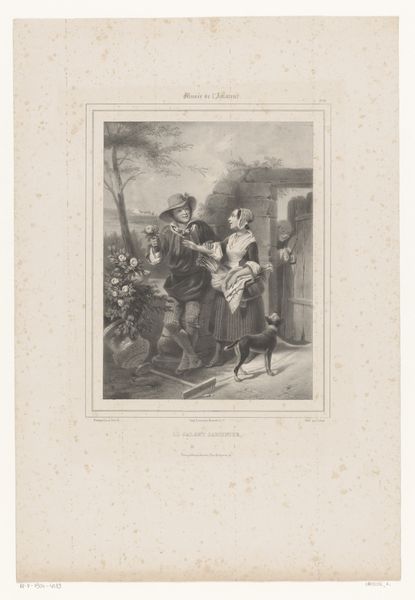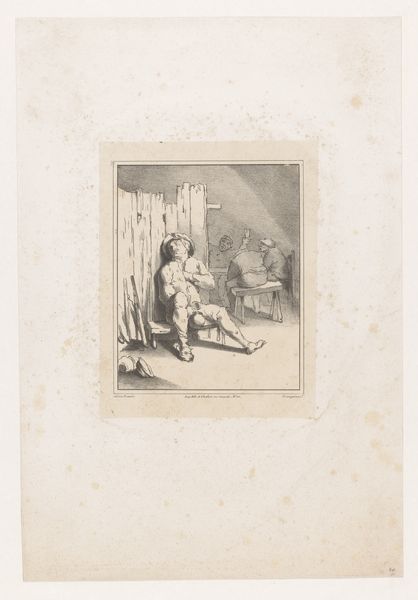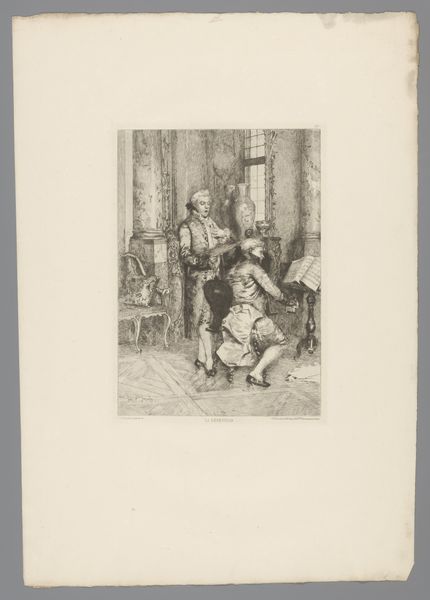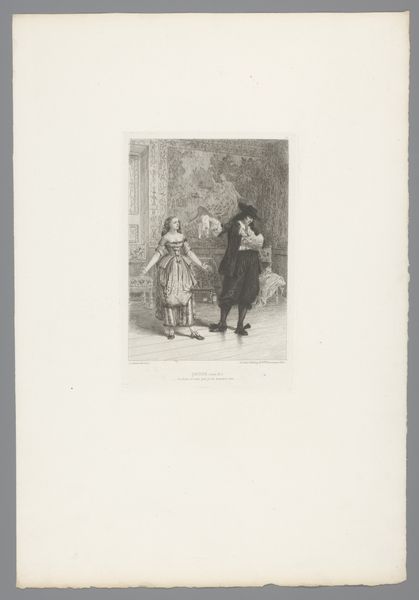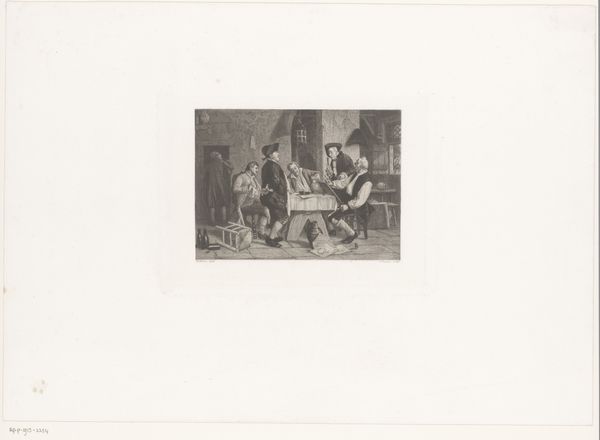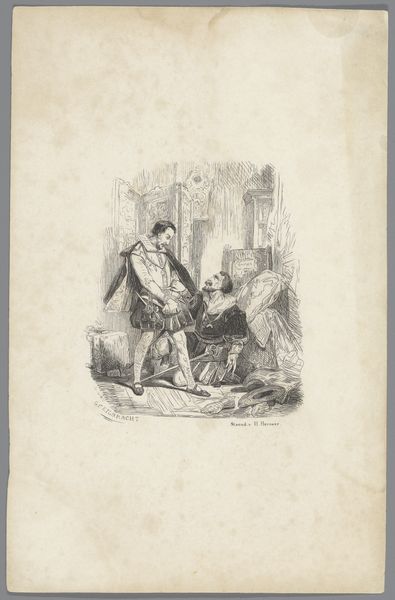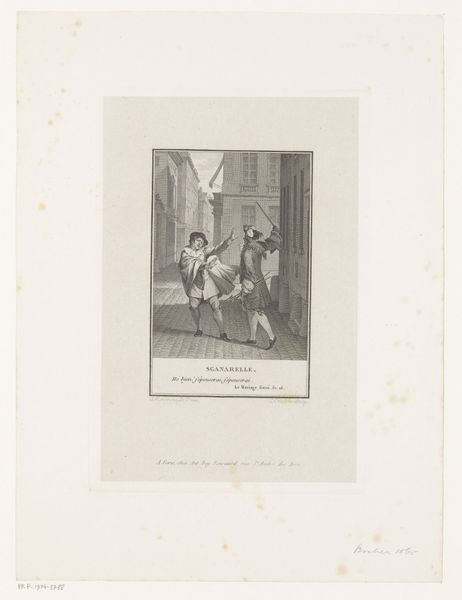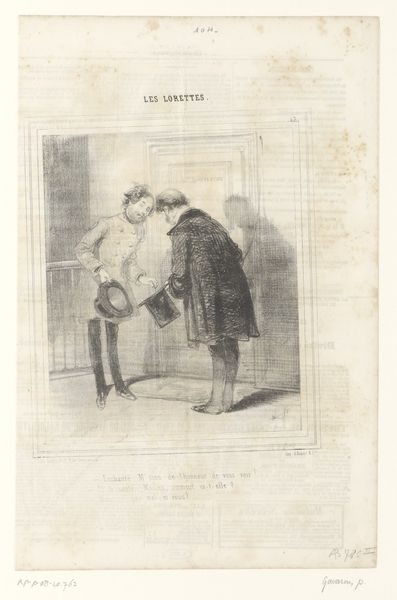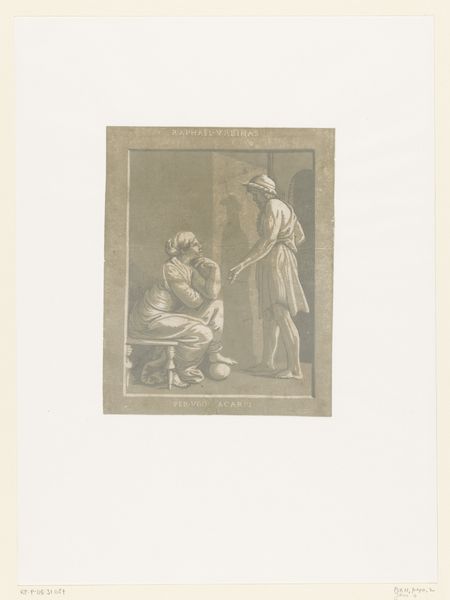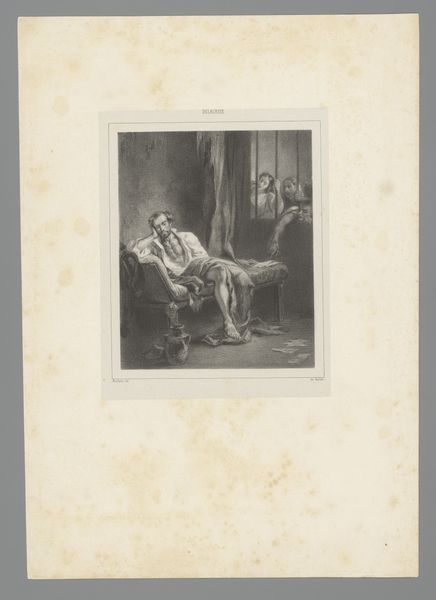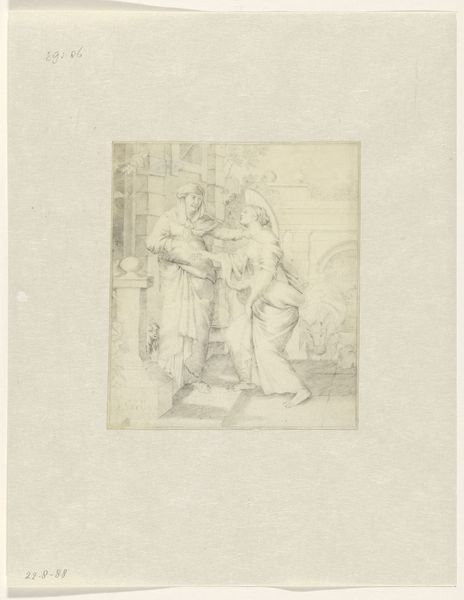
drawing, paper, pencil
#
portrait
#
drawing
#
paper
#
pencil
#
sketchbook drawing
#
pencil work
#
genre-painting
#
realism
Dimensions: height 142 mm, width 97 mm
Copyright: Rijks Museum: Open Domain
Curator: This compelling pencil drawing on paper from 1855 is titled "Interieur met twee peinzende mannen," which translates to "Interior with Two Pensive Men." It’s by Lambertus Lingeman. Editor: Immediately striking, isn't it? The sketch has a slightly somber quality. You can feel the weight of thought emanating from both figures. I wonder what’s preoccupying them. Curator: That's precisely what draws me in. It invites us to consider 19th-century masculinity, perhaps even anxieties surrounding societal expectations. Are they deep in thought due to pressures to perform a certain role? The sitter looks down whereas the standing sitter has a slightly different social stance; both of these give clues as to what we see being presented in the picture. Editor: And looking closely at the details of execution reveals some about labor itself, I see signs that indicate rapid strokes of pencils that quickly yet delicately define each sitter's face and form, contrasting nicely against a more carefully rendered light, while each material— paper and graphite are rendered at face value revealing what we could describe today as "raw beauty." Curator: That's fascinating. To extend that line of thought, consider how interiority and performativity intersect here. Their posture and dress suggest a certain self-presentation that must reflect class. The space itself is rendered as both sparse, simple, a material choice but with just enough interior decor visible within the composition so the class distinctions between them becomes apparent.. Editor: There’s definitely a tension between how deliberately it feels staged, if staged at all— perhaps a peek through the door of what is real. In art, we constantly consider what has social function; this piece highlights that conversation surrounding portrait art, too. Curator: Absolutely. It reminds us that identity is often performed and negotiated. What are we to consider about its historical placement given such overt posing happening amidst subtle material conditions presented throughout by Lingeman which beg considerations like its possible patron versus intentions with presentation during art practices? Editor: Considering the labour required versus potential compensation available if patron, adds layers which leads back to broader conversations about value judgements between 'fine art' like portrait, versus applied decorative arts where the patron system plays vital part in its value assignment. What an intense yet important subject tackled elegantly by master artist! Curator: Yes, ultimately, Lingeman challenges us to recognize how socially constructed definitions of identity intersect not only one's economic position within the setting captured so cleverly while adding complex depths that spark critical thinking beyond surface appearance through composition, light... Editor: Indeed, viewing artwork while discussing this artwork from both analytical perspectives creates better depth.
Comments
No comments
Be the first to comment and join the conversation on the ultimate creative platform.

